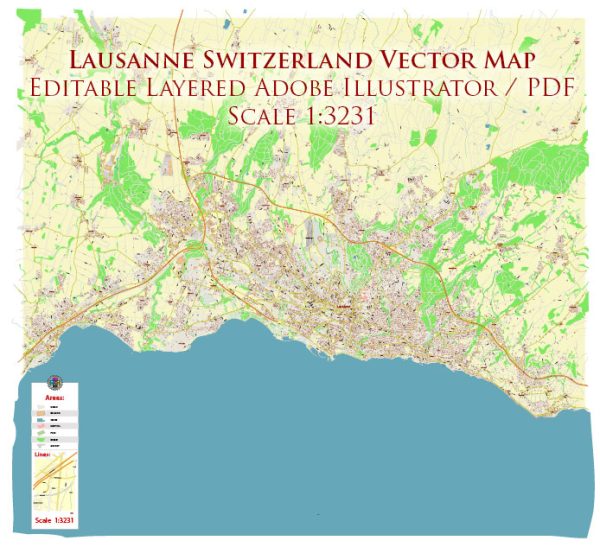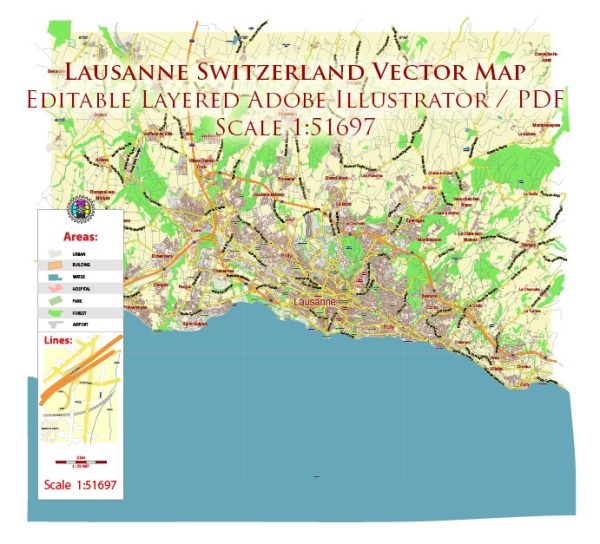Lausanne, the fourth-largest city in Switzerland, is located on the northern shore of Lake Geneva (Lac Léman) in the French-speaking part of the country. The city has a rich history that dates back to Roman times, and its urban development has evolved over the centuries. Here’s an overview of the history of urban development in Lausanne:
- Roman Period (1st century BC – 4th century AD): Lausanne’s history can be traced back to the Roman era when it was known as “Lousonna.” It served as a significant Roman settlement and was a strategic point on the road from Italy to the north of Gaul. Archaeological evidence, including remnants of a Roman villa, attests to the city’s Roman origins.
- Medieval Period (5th century – 15th century): Lausanne became an episcopal see in the 6th century, and the Cathedral of Notre Dame was constructed during the 12th and 13th centuries. The medieval period saw the development of the Old Town with its narrow streets, squares, and buildings that still stand today. Lausanne became an important religious and cultural center in the region.
- Bernese Rule (1536 – 1798): In the 16th century, Lausanne came under Bernese rule during the Reformation. This period saw the city becoming a Protestant stronghold. The layout of the city began to change with the construction of new buildings, including townhouses and administrative buildings. The Cathedral was also modified during this time.
- Napoleonic Era and Vaudois Independence (1798 – 1848): Lausanne experienced changes during the Napoleonic era when it became part of the French Republic. After the Congress of Vienna, the city joined the newly formed Swiss Confederation in 1803. This period saw the establishment of the Canton of Vaud and Lausanne as its capital.
- Industrialization and Modernization (19th century): The 19th century brought industrialization and modernization to Lausanne. The city expanded, and new neighborhoods were developed. The opening of the Lausanne-Morges railway in 1855 and the arrival of other transport infrastructure further influenced urban growth.
- 20th Century: Lausanne continued to grow in the 20th century, with the development of suburbs and the expansion of educational and cultural institutions. The Olympic Museum, established in 1993, reflects the city’s role as the headquarters of the International Olympic Committee.
- Contemporary Period: In recent years, Lausanne has focused on sustainable urban development and maintaining its cultural and historical heritage. The city has invested in public spaces, transportation, and environmental initiatives to enhance the quality of life for its residents.
Lausanne’s urban development reflects a blend of historical charm and modern amenities, making it a dynamic and culturally rich city on the shores of Lake Geneva.



 Author: Kirill Shrayber, Ph.D.
Author: Kirill Shrayber, Ph.D.